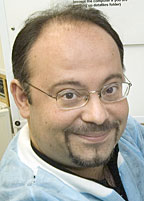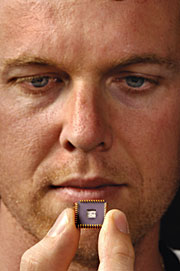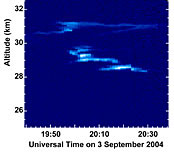| Research
|
|
|||||||||||||||||||||||||
|
Check out symmetry—the
|
Meteoroid ‘smoke' may influence weather, study finds
Space-based infrared sensors of the U.S. Department of Defense detected the object 75 kilometers high, descending rapidly off the coast of Antarctica. DOE visible-light sensors, built by DOE's Sandia National Laboratories, noticed the intruder when it became a fireball. They identified it as an asteroid — not a missile — 56 kilometers above Earth. Five infrasound stations, to detect nuclear explosions anywhere in the world, registered acoustic waves (analyzed at the DOE's Los Alamos National Laboratory), confirming the speeding asteroid. The debris cloud formed by the disintegrating space rock was imaged by NASA's multi-spectral polar orbiting sensor. This array of multi-agency sensors worked together to provide basic facts: the time of entry, speed, and size — one of the largest meteoroids to enter Earth's atmosphere in a decade. But, there was one last sighting: scientists using ground-based lidar detected an irregular cloud of material in the upper stratosphere over Antarctica. These were the first direct measurements of meteoritic “smoke.” Scientists have paid little attention to meteoroid dust, assuming it did not affect Earth's environment, says Andrew Klekociuk, a scientist at the Australian Antarctic Division. New observations suggest that this micron-sized dust could play a more important climate role, according to Klekociuk and other researchers, including Sandia's Dick Spalding, in an Aug. 25 paper published in the journal Nature. The asteroid deposited 1,000 metric tons in the stratosphere in seconds, according to data from Sandia sensors, whose primary function is to detect nuclear explosions. The sensor evolution to include meteor fireball observations came when Sandia's Spalding recognized that ground-based data processing might be modified to record the relatively slower flashes of asteroids and meteoroids. This ability to distinguish a nuclear explosion from an asteroid fireball with equavalent energy provides an additional safety margin for decision makers responding to nuclear threats. Submitted by DOE's Sandia National Laboratories |




